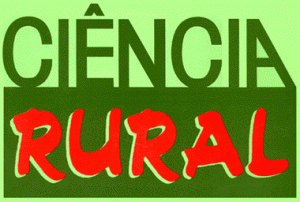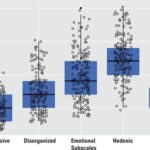By Éder Matsuo, Professor and researcher, Instituto de Ciências Exatas e Tecnológicas, Universidade Federal de Viçosa, Campus Rio Paranaíba, Rio Paranaíba, MG, Brazil
What is the behavior of hypocotyl over several soybean planting times? Motivated by this question, researchers from the Universidade Federal de Viçosa, in Minas Gerais, Brazil, developed a study to identify soybean cultivars with patterns of behavior as to the length of the hypocotyl. The results of the study are described in the article “Stability of the hypocotyl length of soybean cultivars using neural networks and traditional methods”, in Ciência Rural journal (vol. 49, no. 3).
The researchers used neural network techniques and traditional methods to identify soybean cultivars with predictable and stable behavior. They analyzed 16 soybean cultivars in six planting seasons under greenhouse conditions. Some methodologies and analysis techniques used were analysis of variance and Tukey’s test, the technique of Plaisted and Peterson (1959), Eberhart and Russel (1966) and neural networks proposed by Barroso, et al. (2013).
The cultivars BRS810C, BRSMG760SRR, TMG1175RR and BMX Tornado RR showed the highest stability and adaptability of hypocotyl length.

Image: mari_lazaro.
For the researcher Éder Matsuo, the study may contribute to soybean genetic improvement by providing more detailed information on the potential descriptor, the length of the hypocotyl. “Studies of refinement of the knowledge already acquired as to the length of the hypocotyl, become important for this factor to be, in the future, considered a descriptor for the soybean crop in the analysis of registration and protection of cultivars with the Ministry of Agriculture, Livestock and Supply (MAP)/National System of Protection of Cultivars (SNPC) “, points Matsuo. Information about hypocotyl behavior was still lacking over several planting periods.
The study is part of a research field interested in increasing knowledge about potential descriptors of cultivars, such as those by Nogueira, et al. (2008), Matsuo, et al. (2012) and Machado Júnior, et al. (2018) and the neural networks in agriculture as those of Carvalho, et al. (2018) and Nascimento, et al. (2013) that focused, respectively, on the classification of genotypes and descriptors of cotton and alfalfa crops.
References
BARROSO, L.M.A., et al. The use of Eberhart and Russell method as a priori information for application of artificial neural networks and analysis discriminant for evaluate the phenotypic adaptability and stability of alfafa (Medicago sativa) genotypes. Revista Brasileira de Biometria. 2013, vol. 31, no. 2, pp. 176-188, e-ISSN: 1983-0823 [viewed 5 June 2019]. Available from: http://jaguar.fcav.unesp.br/RME/fasciculos/v31/v31_n2/A1_Lais_FAbiano.pdf
CARVALHO, L.P., et al. Artificial neural networks classify cotton genotypes for fiber length. Crop Breed. Appl. Biotechnol. [online]. 2018, vol. 18, no. 2, pp. 200-204, ISSN: 1518-7853 [viewed 5 June 2019]. DOI: 10.1590/1984-70332018v18n2n28. Available from: http://ref.scielo.org/wrxxpn
EBERHART, S.A. and RUSSEL, W.A. Stability parameters for comparing varieties. Crop Science [online]. 1966, vol. 6, no. 1, pp. 36-40, e-ISSN: 1435-0653 [viewed 5 June 2019]. DOI: 10.2135/cropsci1966.0011183X000600010011x. Available from: https://dl.sciencesocieties.org/publications/cs/abstracts/6/1/CS0060010036
MACHADO JUNIOR, R., et al. Use of millimeter ruler as an alternative tool in the phenotyping of potential descriptors of soybean. African Journal of Agricultural Research [online]. 2018, vol. 13, no. 28, pp. 1425-1429, e-ISSN: 1991-637X [viewed 5 June 2019]. DOI: 10.5897/AJAR2018.13248. Available from: https://academicjournals.org/journal/AJAR/article-abstract/ED7D0B157761
MATSUO, É., et al. Estimates of the genetic parameters, optimum sample size and conversion of quantitative data in multiple categories for soybean genotypes. Acta Sci., Agron. [online]. 2012, vol. 34, no. 3, pp. 265-273, ISSN: 1807-8621 [viewed 5 June 2019]. DOI: 10.1590/S1807-86212012000300006. Available from: http://ref.scielo.org/vmyc88
NASCIMENTO, M., et al. Artificial neural networks for adaptability and stability evaluation in alfalfa genotypes. Crop Breed. Appl. Biotechnol. [online]. 2013, vol. 13, no. 2, pp. 152-156, ISSN: 1984-7033 [viewed 5 June 2019]. Available from: http://ref.scielo.org/tcncjj
NOGUEIRA, A.P.O., et al. Novas características para diferenciação de cultivares de soja pela análise discriminante. Cienc. Rural [online]. 2008, vol. 38, no. 9, pp. 2427-2433, ISSN: 0103-8478 [viewed 5 June 2019]. DOI: 10.1590/S0103-84782008005000025. Available from: http://ref.scielo.org/r99sj6
PLAISTED, R.L. and PETERSON, L.C. A technique for evaluating the ability of selections to yield consistently in different locations and seasons. American Potato Journal [online]. 1959, vol. 36, no. 11, pp. 381-385, e-ISSN: 1874-9380 [viewed 5 June 2019]. DOI: 10.1007/BF02852735. Available from: https://link.springer.com/article/10.1007/BF02852735
To read the article, access it
ALVES, G.F., et al. Stability of the hypocotyl length of soybean cultivars using neural networks and traditional methods. Cienc. Rural [online]. 2019, vol. 49, no. 3, e20180300, ISSN: 0103-8478 [viewed 5 June 2019]. DOI: 10.1590/0103-8478cr20180300. Available from: http://ref.scielo.org/vxjwkh
External links
Ciência Rural – CR: <http://www.scielo.br/cr>
Laboratório de Bioestatística <http://bioestatistica.crp.ufv.br/>
Como citar este post [ISO 690/2010]:















Recent Comments